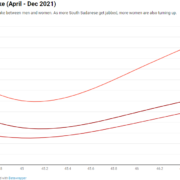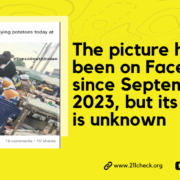Explainer: How to Safeguard Your WhatsApp Account from Hacking Attempts
Shield your WhatsApp Account from hackers with these top tips!
Writer: Jibi Moses
Many people have fallen victim to hacking in various ways, whether in their emails, social media accounts, pages, profiles, or groups. This always causes frustration, disappointment, and the loss of valuable information and resources.
The new trend is WhatsApp hacking. It involves using social engineering techniques (e.g., Vishing, phishing, and smishing) to trick users into revealing their account information or clicking malicious links. Once the hacker has access to the user’s account, they can use it to spread malware, scam the user’s contacts, or even steal their data.
Hackers use a standard social engineering technique: sending a message to the user, pretending to be a trusted friend or family member. The message may ask the user to share a verification code, click on a link, or install a file. If the user falls for the trick, the hacker will then be able to gain access to their account.
Do not share your verification code with anyone.
Another common technique is sending a message to the user claiming to be from WhatsApp. The message may warn the user that their account is at risk of being suspended or banned and ask them to click on a link to verify their account information. If the user clicks on the link, they will be taken to a fake WhatsApp login page where the hacker can steal their credentials.
Ignore such phishing messages, and don’t click links on them.
One recent example happened in South Sudan, where a hacker infiltrated a WhatsApp group and managed to manipulate a user. After initiating a new registration of the WhatsApp number, He calls a group member and tells him/her, We are having a meeting in the evening, and to confirm your attendance, I have sent you a code. It’s on your screen; send it to me. However, the code clearly says.. “Enter this verification code on your phone.”
How to protect yourself from WhatsApp hacking
There are several things you can do to protect yourself from WhatsApp hacking:
- Be wary of suspicious messages: If you receive a message from someone you don’t know or from a trusted contact asking for something unusual, don’t click on any links or share any information. Instead, contact the person directly through another channel to confirm that they sent the message.
Phishing is a type of cyberattack that involves sending fake or deceptive messages or links that trick you into revealing your personal information or credentials. Hackers may use phishing techniques to hack your WhatsApp account by pretending to be someone you know or trust, such as a friend, family member, colleague, or official entity.
Be wary of suspicious messages such as the one above.
Be wary of suspicious messages such as the one above.
- Never share your WhatsApp verification code with anyone: Your WhatsApp verification code is a unique code sent to your phone when you register for WhatsApp or log in to your account from a new device. This code is used to verify that you own the account. Never share your verification code with anyone, even if they claim to be from WhatsApp.
- Keep your WhatsApp app and phone up to date. WhatsApp regularly releases updates that patch security vulnerabilities. Make sure to install these updates as soon as they are available.
- Enable two-factor authentication (2FA). 2FA adds an extra layer of security to your WhatsApp account by requiring you to enter a code from your phone in addition to your password when logging in. To enable 2FA, go to WhatsApp Settings > Account > Two-Step Verification.
You should also use a strong PIN for two-step verification. Do not use simple or apparent sequences like 123456, 000000, or 111111. Do not use your birthday, phone number, or other personal information as your PIN. Do not write down or share your PIN with anyone.
- If you think your WhatsApp account may have been hacked, you should take the following steps immediately:
- Log out of your WhatsApp account on all devices. You can do this by going to WhatsApp Settings > Account > Unlink Devices.
- Change your WhatsApp password. Go to WhatsApp Settings > Account > Tap your profile picture > Tap the menu icon (three dots) > Tap Change password.
- Enable 2FA if you haven’t already.
- Report the hack to WhatsApp. You can do this via WhatsApp Settings > Help > Contact Us.
These tips can help protect yourself from WhatsApp hacking and keep your account safe.
- Additional tips:
- Be careful about what information you share on WhatsApp. Avoid sharing personal information such as your address, phone number, or date of birth.
- Be careful about the groups you join. Hackers may create fake groups to trick users into joining and steal their data.
- Be careful about the files you download from WhatsApp. Only download files from people you know and trust.
- If you see anything suspicious on WhatsApp, report it to WhatsApp immediately.
Being vigilant and taking the necessary precautions can help keep yourself and your WhatsApp account safe from hackers.
To ensure accuracy and transparency, we at 211 Check welcome corrections from our readers. If you spot an error in this article, please request a correction using this form. Our team will review your request and make the necessary corrections immediately, if any.









If you want to have access to a loan from $70,000 to $100,000 and have an excellent credit in the space of 2weeks then Gold credit is your guy, He saved me when i needed a loan to buy a house . I got denied when i requested for a loan because my credit was poor . I reached out to GOLDCREDITFIX @ Gmail dot com .. he increased my score and i got 3 credit cards and a loan of $70,000. Send him a message if you also need this service.